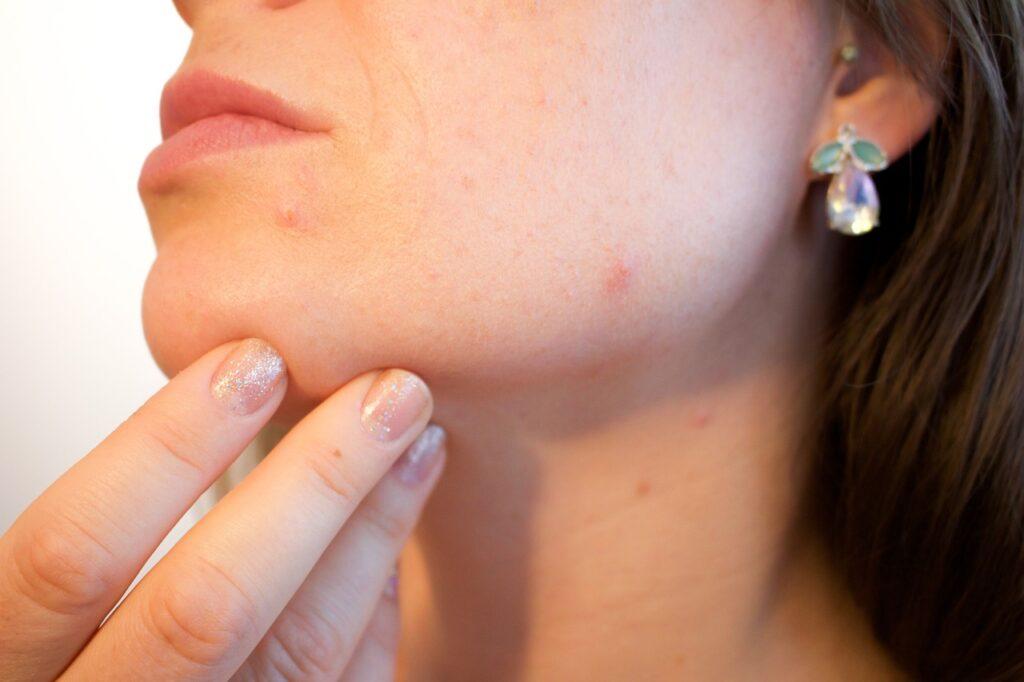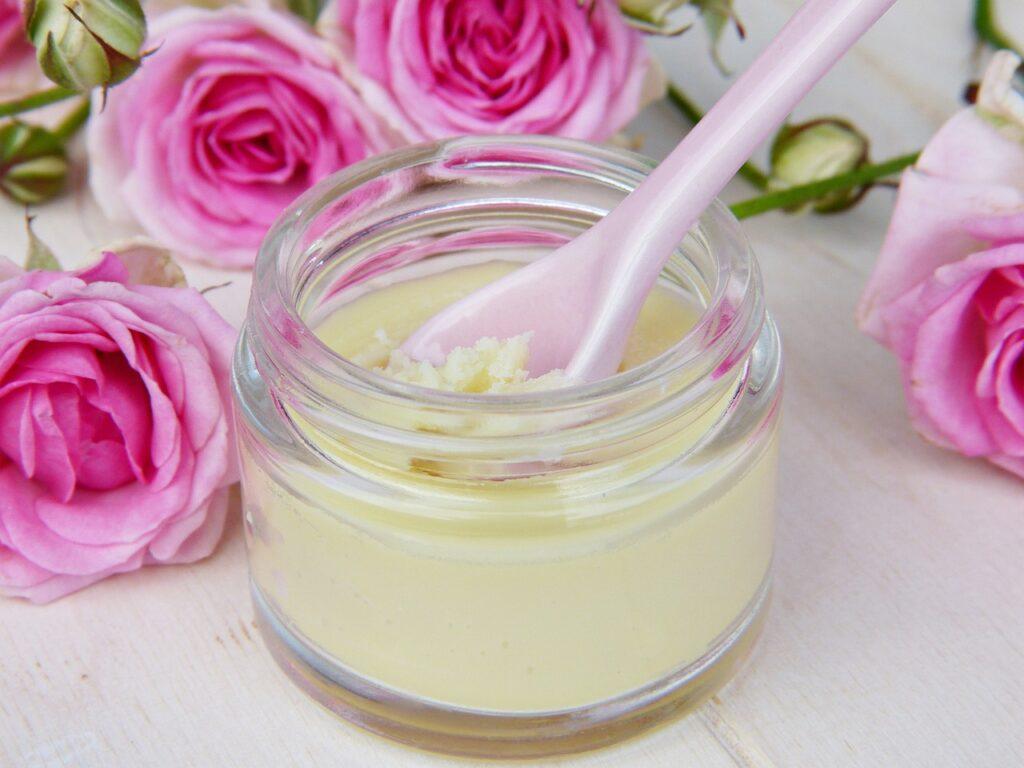So you’re dealing with an annoying breakout, but you’re also lookin’ to keep your skin well-hydrated? The big question is: can you put an acne patch over moisturizer? Well, here’s the scoop. Acne patches have become quite the lifesavers for tackling those pesky pimples, but when it comes to applying them over moisturizer, opinions seem to vary. Some swear by applying the acne patch over a layer of moisturizer for added hydration, while others believe it’s best to apply the patch directly on clean and dry skin. Let’s dive into the details and find out the best approach for your skincare routine!
Moisturizer and Acne Patches
Acne is a common skin concern that many people face, and finding effective solutions to combat it can be a challenge. Two popular products in the skincare world that are often used to address acne are moisturizers and acne patches. While these two may seem like separate entities, there is a question that often arises: Can you put an acne patch over moisturizer? In this article, we will explore the relationship between moisturizers and acne patches, the effects of applying an acne patch over a moisturizer, proper application techniques, choosing the right products, and alternative methods to consider. By the end of this article, you will have a comprehensive understanding of how these two skincare essentials can work together to target acne effectively.
What are Acne Patches?
Before delving into the role of moisturizer in skincare, let’s first understand what acne patches are. Acne patches, also known as pimple patches or acne stickers, are small, adhesive patches that are applied directly onto acne-prone areas of the skin. These patches are designed to both treat and protect acne by creating a barrier between the blemish and external factors such as dirt and bacteria. They typically contain ingredients like hydrocolloid, which helps to absorb oil and pus from the acne, promoting faster healing.
Acne patches have gained popularity due to their convenience and effectiveness. They are often transparent or close to the skin tone, allowing for discreet usage during the day or night. These patches are available in different sizes to accommodate various sizes of acne blemishes. They offer a non-invasive alternative to traditional acne treatments and can significantly reduce the visibility and discomfort associated with acne.
The Role of Moisturizer in Skincare
Moisturizers play a crucial role in any skincare routine, especially for individuals with acne-prone skin. Contrary to popular belief, moisturizer is not the enemy of acne-prone skin. In fact, using the right moisturizer can help improve the overall condition of your skin by keeping it hydrated, balanced, and protected from external irritants.
One of the main benefits of moisturizer is its ability to maintain the skin’s moisture barrier. Acne-prone skin often tends to be dehydrated, and a lack of moisture can lead to an overproduction of sebum, the skin’s natural oil. This excess sebum can clog pores and contribute to the formation of acne. A well-formulated moisturizer can provide hydration without clogging the pores, helping to regulate sebum production and prevent dryness-induced breakouts.
Moisturizers also play a vital role in soothing and calming irritated skin. Acne-prone skin can often be sensitive and inflamed, especially if acne treatments or harsh ingredients are used. By applying a moisturizer, you can help reduce redness, flakiness, and discomfort associated with acne. Additionally, moisturizers can create a protective barrier on the skin, shielding it from environmental aggressors that can worsen acne.
Can You Put an Acne Patch Over Moisturizer?
Now that we understand the significance of both acne patches and moisturizers, let’s address the burning question – can you put an acne patch over a moisturizer? The answer is yes, you can apply an acne patch over moisturizer without any adverse effects. In fact, combining the benefits of both products can enhance the effectiveness of your acne treatment.
Acne patches are typically designed to be applied onto clean, dry skin, directly over the acne blemish. However, if you prefer to use a moisturizer before applying the patch, there is no harm in doing so. Moisturizers are lightweight and quickly absorbed into the skin, which means they are unlikely to interfere with the patch’s adhesion or effectiveness.
Factors to Consider
While it may be safe to put an acne patch over moisturizer, it is essential to consider a few factors to ensure optimal results. Firstly, choose a moisturizer that is suitable for acne-prone skin and non-comedogenic, meaning it won’t clog your pores. Look for oil-free or water-based formulas that provide hydration without adding excess oil to your skin.
Furthermore, consider the consistency of your moisturizer. Opt for a moisturizer that is lightweight and easily absorbed into the skin rather than a heavy or greasy one. This will minimize the risk of the patch not adhering properly and slipping off.
Lastly, take into account the specific instructions provided by the acne patch manufacturer. Some patches may have specific guidelines on how to apply them, and it’s always best to follow those instructions for optimal results.

Effects of Acne Patch Over Moisturizer
Now that we’ve established that you can put an acne patch over moisturizer, let’s explore the potential effects of this combination. By understanding how these products interact, you can make informed decisions about your skincare routine and achieve the best possible outcomes.
Does It Affect Patch’s Adhesion?
One concern when applying an acne patch over moisturizer is whether it will compromise the patch’s adhesion. Fortunately, most acne patches are designed to stick firmly onto the skin, even over moisturized areas. The adhesive on the patch is typically strong enough to overcome the presence of moisturizer. However, keep in mind that the effectiveness of the adhesion may vary depending on the specific patch brand and the consistency of the moisturizer used. If you find that the patch is not sticking well or is slipping off, you may want to try using a lighter moisturizer or applying the patch to dry skin.
Does It Diminish Patch’s Effectiveness?
Another concern is whether applying a moisturizer before an acne patch will diminish its effectiveness. While there is no concrete evidence to suggest that this is the case, it’s important to choose a moisturizer that won’t interfere with the patch’s ability to deliver its active ingredients to the acne blemish. Look for moisturizers that are free of potential irritants, fragrances, and heavy oils that may hinder the patch’s absorption or efficacy.
Potential for Irritation
When combining multiple skincare products, there is always a risk of potential irritation. While the likelihood of irritation is generally low when applying an acne patch over moisturizer, it’s crucial to monitor your skin for any adverse reactions. If you notice increased redness, itching, or discomfort, it may be a sign that the combination of products is not suitable for your skin. In such cases, consider discontinuing the use of one or both products or consult a dermatologist for further guidance.
Proper Application Technique
To ensure the best possible results when using an acne patch over moisturizer, it’s important to follow proper application techniques. By incorporating these steps into your skincare routine, you can maximize the benefits of both products and support the healing process of your acne.
Steps to Follow
- Cleanse your face thoroughly: Start by washing your face with a gentle cleanser to remove any dirt, oil, or impurities on your skin. Pat your face dry with a clean towel.
- Apply your moisturizer: Take a small amount of moisturizer and gently massage it into your skin, focusing on any areas that tend to get dry or flaky. Allow the moisturizer to absorb fully before proceeding to the next step.
- Select an appropriate acne patch: Choose an acne patch that is suitable for your needs and the size of your acne blemish. Carefully peel the patch from its packaging, being cautious not to touch the adhesive side with your fingers.
- Place the patch over your acne blemish: Position the acne patch directly over the acne blemish, ensuring that it adheres well to your skin. Gently press down on the patch to secure it in place.
- Leave the patch on for the recommended time: Most acne patches can be worn for several hours or overnight. Follow the instructions provided with the patch to determine the ideal length of time for wearing it.
- Remove the patch carefully: When it’s time to remove the patch, slowly peel it off from one edge, being careful not to disrupt the healing acne blemish. Dispose of the used patch hygienically.
Tips for Best Results
- Cleanse your face thoroughly before applying any skincare products to ensure a clean canvas for absorption and prevent any potential irritation.
- When applying moisturizer, use gentle and upward motions to prevent tugging or pulling on the skin.
- Allow your moisturizer to fully absorb into the skin before applying the acne patch to ensure better adhesion and avoid the patch from slipping off.
- If you often have difficulty with patch adhesion, consider using a patch specifically designed for sensitive or dry skin, as these tend to have stronger adhesive properties.
- Be consistent with your skincare routine. Regularly apply an acne patch over moisturizer to give your skin time to heal and receive the benefits of both products.

Choosing the Right Products
To achieve the best possible results when combating acne with the combination of an acne patch and moisturizer, it’s crucial to choose the right products that are suitable for your skin type and concerns.
Selecting an Acne Patch
When selecting an acne patch, consider the following factors:
- Ingredients: Look for patches that contain beneficial ingredients like hydrocolloid, which helps absorb excess oil and pus from the acne blemish. Avoid patches that contain irritants or potential allergens.
- Adhesion: Ensure that the patch has strong adhesive properties to prevent it from slipping off throughout the day or night.
- Transparency: For discreet usage, opt for patches that are transparent or close to your skin tone.
- Size options: Choose a brand that offers different sizes to suit the various blemishes you may have on your skin.
Choosing a Moisturizer
When choosing a moisturizer to use in combination with an acne patch, keep the following in mind:
- Skin type: Select a moisturizer that is specifically formulated for your skin type, whether it is oily, dry, combination, or sensitive.
- Non-comedogenic formula: Look for moisturizers labeled as non-comedogenic, meaning they won’t clog your pores and contribute to acne formation.
- Lightweight texture: Opt for a moisturizer with a lightweight texture that is easily absorbed into the skin, avoiding heavy or greasy formulas.
- Additional benefits: Consider moisturizers that offer additional benefits such as oil control, soothing properties, or ingredients that promote acne healing.
Alternatives to Consider
While the traditional method of applying an acne patch over moisturizer is widely accepted and effective, there are alternative approaches that you can explore to see what works best for your skin.
Applying Moisturizer Before Acne Patch
The conventional method involves applying moisturizer before the acne patch, as discussed throughout this article. This approach allows the moisturizer to hydrate and condition the skin while the acne patch focuses on absorbing oil and promoting healing. By using this method, you can enjoy the benefits of both products working simultaneously.
Using Acne Patch After Moisturizer
An alternative method involves applying the acne patch after moisturizer. This approach can be particularly useful if you find that applying the patch directly onto clean skin causes dryness or irritation. By first moisturizing your skin, you provide a protective barrier that can minimize the potential for any adverse reactions while still benefiting from the active ingredients in the patch.
Ultimately, the choice between these two methods boils down to personal preference and the specific needs of your skin. It may be worthwhile to experiment with both approaches to determine which one provides the best results for you.
Conclusion
Acne can be a frustrating and challenging skin concern to tackle, but with the right skincare products and techniques, it can be effectively managed. Moisturizers and acne patches are two essential components of any acne-fighting regimen. While applying an acne patch over moisturizer is safe and often beneficial, it’s crucial to select suitable products, follow proper application techniques, and consider alternative methods. By integrating these tips into your skincare routine, you can harness the power of both moisturizers and acne patches to enhance your acne treatment and achieve clearer, healthier skin. Remember, everyone’s skin is unique, so it’s essential to listen to your skin’s needs and consult with a dermatologist if you have any concerns or persistent acne issues.
More about Can You Use Acne Face Wash On Your Body




